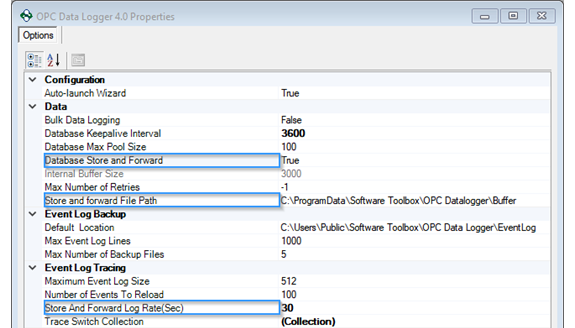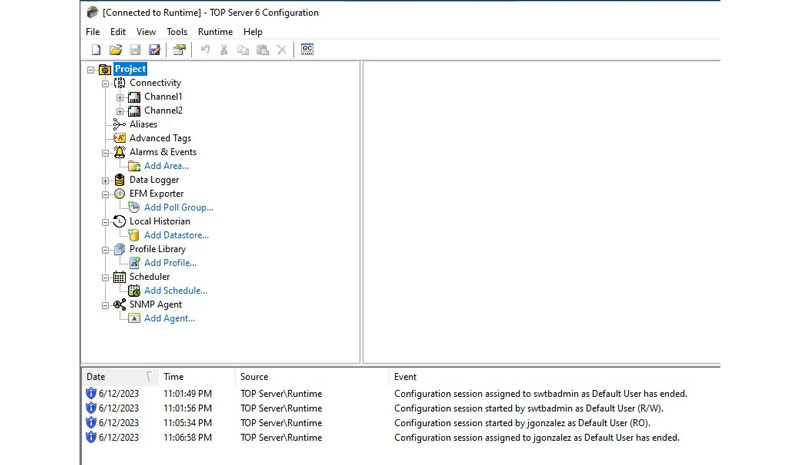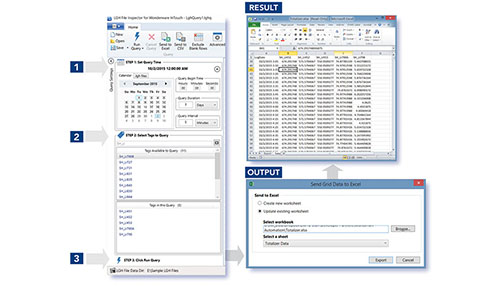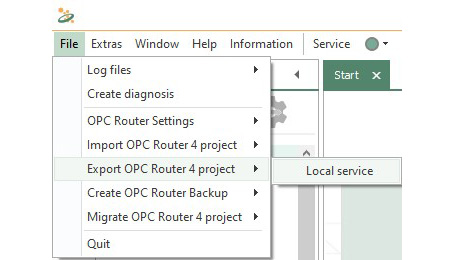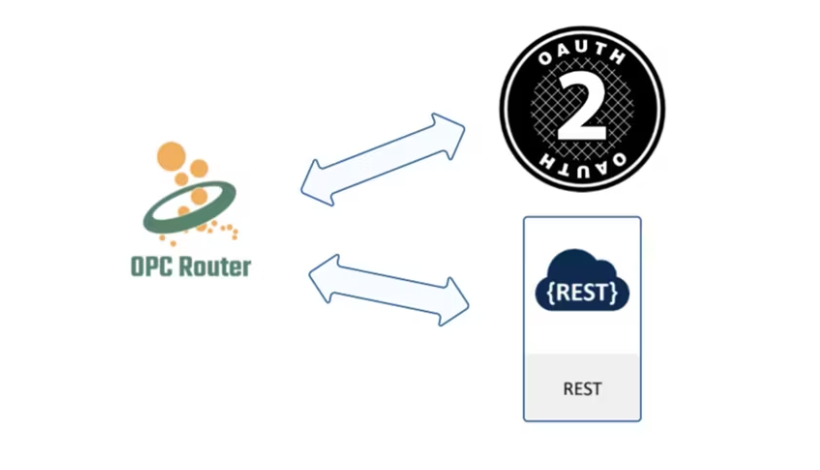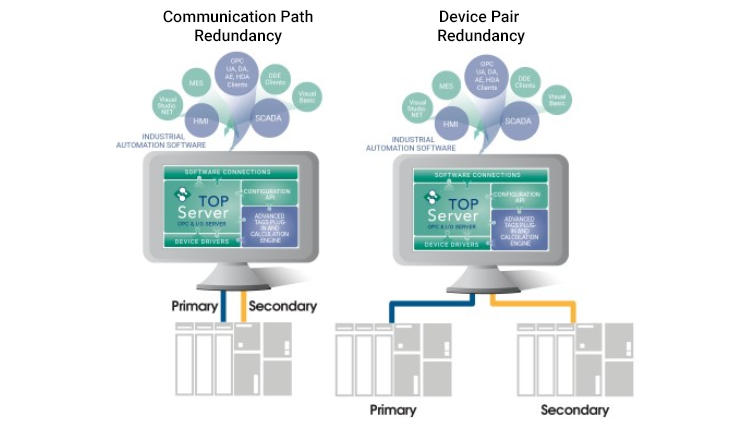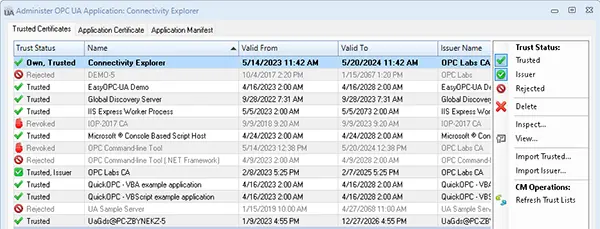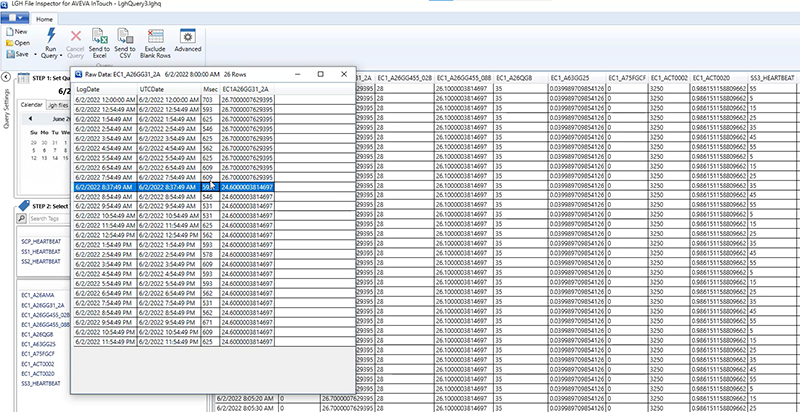If you’re an existing user of OPC Data Logger or in the market for an OPC logging solution, you likely agree that having a reliable and accurate record of your data is a top priority. One of the most valuable parts of investing in a data logging solution is being able to trust that all the data from your sources is captured. But what happens if you lose the connection to your database? What happens to the incoming data during that downtime? Software Toolbox offers several solutions for logging data and today we will focus on OPC Data Logger and its database logging capabilities.
Software Toolbox Technical Blog
Product Update: OPC Data Logger - Store & Forward Added
4 min read
By Connor Mason on Aug 10, 2023 2:00:00 PM
Tech Support Corner: Making TOP Server Config Changes While Active
2 min read
By John Gonzalez on Aug 3, 2023 2:00:00 PM
Have you ever wondered why certain features in TOP Server work the way you experience them, or how something might work in certain scenarios? Well this blog post tries to answer a few of those type of questions!
Anyone that has used TOP Server before has had to make edits to the configuration. While TOP Server allows changes to many settings while actively collecting and serving data, and makes it simple, there are things to consider to avoid disrupting operations. TOP Server has certain restrictions in place when making configuration changes, and while potentially frustrating, these are for your benefit and security. For example, perhaps you have tried to make a certain change, but observed that the setting immediately changes back and “doesn’t stick”. Or maybe you’ve logged onto your machine and were unable to make any configuration changes at all. Why is that?
Video Blog: Automating LGH File Inspector Queries
1 min read
By Zachary Parham on Jul 27, 2023 2:00:00 PM
LGH File Inspector for AVEVA InTouch (formerly Wonderware) enables easy, scalable, fast access to local daily historical data files (*.lgh files) logged by AVEVA InTouch applications without the limitations imposed by other solutions. There are many advanced features in the product and options for automating queries to run without user interaction to generate reports, exports, and more.
OPC Router Configuration Management Overview, Methods & Tips
7 min read
By Nicole Knox on Jul 20, 2023 2:00:00 PM
When working with OPC Router, especially as you build larger and more powerful projects to integrate OPC, web services, databases, ERP, SAP, and other systems in your Industry 4.0 initiatives, it’s good to have an idea of the underlying operations of the application. That knowledge can empower you to get the best results from the software’s many connectors and visual workflow engine. If you’ve never heard of or are new to OPC Router, we invite you to explore the OPC Router website and view the OPC Router Getting Started Virtual Training Video.
OPC Router Power Tips - Using OAuth 2.0 with REST APIs
2 min read
By Rodrigo Restrepo on Jul 13, 2023 2:00:00 PM
In the ever-changing landscape of industrial control, the ability to establish connections and facilitate efficient data exchange between different technologies is crucial. With digital transformation, the industry requires robust integration solutions more than ever before. This is where the powerful combination of OPC Router, it's ability to both call and host REST APIs using industrial data, and OAuth 2.0 comes into play, enabling organizations to achieve secure and streamlined communication across their automation and other systems.
Ensuring Data Availability with the TOP Server Redundancy Plug-In
6 min read
By Jessica Dillon on Jun 29, 2023 2:00:00 PM
The engineering definition of redundancy is “the inclusion of extra components which are not strictly necessary to functioning, in case of failure in other components.” In the Industrial Automation space, redundancy is critical. Not planning for redundancy can easily result in vulnerability to financial losses due to unexpected downtime. There are multiple types of redundancy in the industry. In this blog, we will be covering “Media-Level Redundancy”.
OPC Data Client 2023.1 Adds .NET 7 support, OPC UA security management improvements & more examples
6 min read
By Ganesh Kalipershad on Jun 22, 2023 2:00:00 PM
With the release of the OPC Data Client 2023.1 toolkit, custom OPC client developers will benefit from improvements targeted at platform support, developer productivity, and custom application end user productivity. If you missed the OPC Data Client 2022 releases, be sure and read what we added to OPC Data Client in 2022. As always, OPC Data Client license holders on an active support and maintenance agreement are entitled to free upgrades.
Getting Started with LGH File Inspector
2 min read
By Zachary Parham on Jun 15, 2023 2:00:00 PM
As a continuation of our Tech Support Corner blog series, this post will look at how to set up a query in LGH File Inspector, how to export LGH data, and some of the configurable options available in LGH File Inspector.
About this Blog
We're engineers like you, so this blog focuses on "How to" appnotes, videos, tech team tips, product update announcements, user case studies, and other technical updates. Subscribe to updates below. Your feedback and questions on posts are always welcomed.
Subscribe to our Blog
Recent Posts
Posts by Topic
- Device Connectivity (207)
- Wonderware (178)
- OPC UA (128)
- Cogent DataHub (110)
- OPC (107)
- TOP Server (105)
- Technical Support (101)
- OmniServer (72)
- Video Tutorials (71)
- OPC Router (52)
- OPC DA (45)
- Protocols (41)
- AVEVA (37)
- Automation 101 (29)
- Security (27)
- MQTT & IoT (24)
- OmniServer Did You Know (24)
- Data Tunneling (23)
- Connectivity (22)
- OPC Data Client (22)
- Development Tools (19)
- IT/OT (18)
- OPC Data Logger (18)
- DCOM (17)
- LGH (14)
- Database & Historian (13)
- OPC Tunnel (13)
- Summer of IoT (13)
- Alarms & Notifications (12)
- CSV (12)
- Database (12)
- Earth Day (12)
- Exploring OPC UA (12)
- OPC Gateway (11)
- Case Studies (10)
- Dream Report (10)
- EFM (10)
- Oil & Gas (10)
- REST & Web Services (10)
- Reporting (10)
- SQL (9)
- Flow (8)
- OPC Integration (8)
- Redundancy (8)
- Sustainability (8)
- AVEVA OPC UA Client (7)
- Modbus (7)
- ODBC (7)
- OPC Router Basic Training (7)
- OPC Server (7)
- SuiteLink (7)
- Data Logging (6)
- DataHub Training (6)
- OPC Alarms and Events (6)
- ProtocolDesign (6)
- xml (6)
- Data Bridging (5)
- Data Integration (5)
- Data Storage Deep Dive (5)
- OPC Conversion (5)
- DataCaster (4)
- InTouch (4)
- Industrial Decisions (4)
- OPC Bridge (4)
- OPC Toolkit Benefits (4)
- OmniServer User Stories (4)
- SLIK-DA (4)
- Business Intelligence (3)
- Error Detection (3)
- IT & Infrastructure (3)
- Industry 4.0 (3)
- OPC Redundancy (3)
- OPC Server Remote Config (3)
- Wedges (3)
- Windows (3)
- Collaboration (2)
- ControlLogix (2)
- Excel (2)
- Ignition (2)
- KEPServerEX (2)
- OPC Wizard (2)
- OSIsoft (2)
- Omron (2)
- PGAS (2)
- Predictive Maintenance (2)
- Process Alert (2)
- Scripting (2)
- Store and Forward (2)
- System Integrators (2)
- Building Automation (1)
- ERP (1)
- LGH User Stories (1)
- LRC (1)
- Linux (1)
- Machine Learning (1)
- Mining/Metals (1)
- OPC Data Logger User Stories (1)
- Omni Flow (1)
- Power & Utilities (1)
- Predictive Analytics (1)
- Process Alerts (1)
- QNX (1)
- Sparkplug B (1)
- Water & Wastewater (1)


